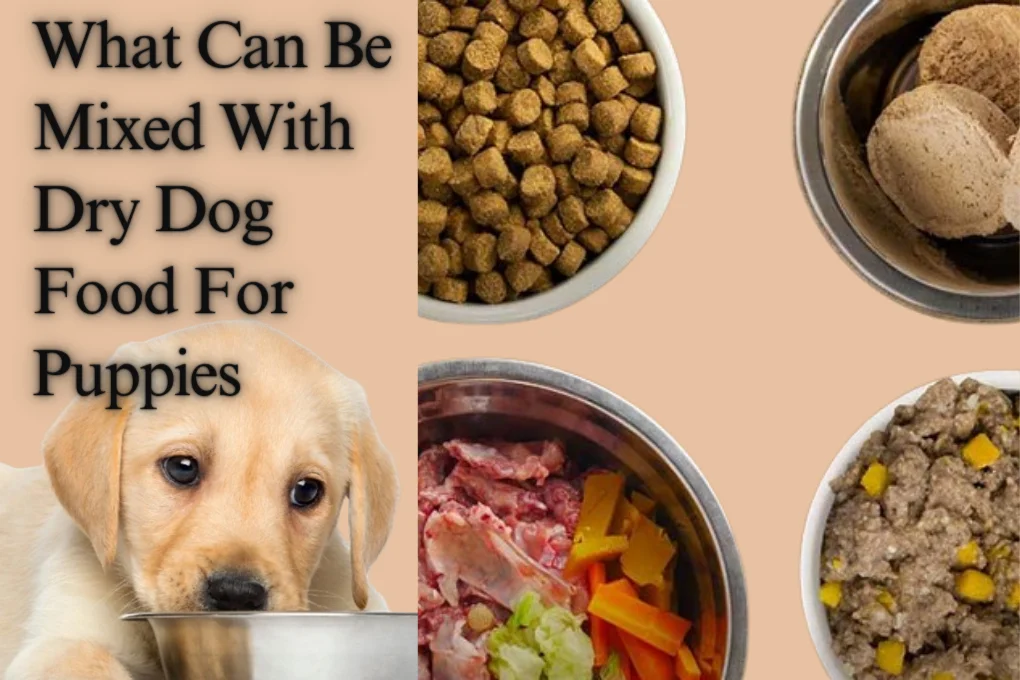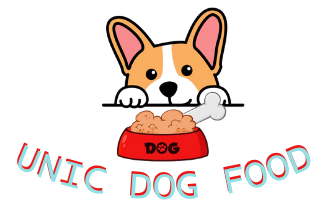As a devoted pet expert and blogger, I often get asked about puppy nutrition, specifically what can be mixed with dry dog food for puppies.
When it comes to puppies, their nutritional needs are quite specific and crucial for their growth and development.
Finding the right mix is crucial for their growth and health. I’ve explored various options and discovered some great choices.
Based on my experience and research, I’ve found several healthy options that not only enhance the nutritional value but also make meals more appealing for these little ones.
What Can Be Mixed With Dry Dog Food For Puppies? 15 Tasty Meal
As a blogger and dog food expert, I’ve researched various options for mixing with dry dog food, especially for puppies. This can not only enhance the taste but also add nutritional value.
Here’s a summary of what I’ve found:
1. Warm Water: A simple addition. It enhances the aroma and texture of the kibble. I’ve personally seen my dog enjoy her meals more with this little change.
2. Vegetables: Small amounts of cooked vegetables like carrots, green beans, or sweet potatoes are excellent. They’re rich in vitamins and fiber.
3. Meat Chunks: Adding chunks of cooked meat like chicken, beef, or lamb (avoid processed meats) can significantly boost protein content.
4. Canned Fish: Options like canned tuna or salmon are great for their omega-fatty acids and protein. Remember to choose low-sodium varieties.
5. Cottage Cheese: A good source of protein and calcium, cottage cheese can add moisture to the meal.

6. Wet Dog Food: Mixing in wet dog food can make the meal more appetizing, offering different textures and flavors.
7. Eggs: Fully cooked eggs can be a nutritious addition, providing protein and essential fatty acids.
8. Broth: Low-sodium broths can add flavor and moisture. Ensure it’s cooled before serving.
9. Pumpkin and Fruits: Canned pumpkin, as well as fruits like apples and bananas, can add vitamins and fiber.
10. Yogurt: Plain yogurt is a source of protein and probiotics, but avoid those with artificial sweeteners.
11. Healthy Fats: Options like flaxseed oil or coconut oil can be beneficial, but use them in moderation.
12. Grains: Cooked quinoa or oatmeal can be a source of protein, vitamins, and minerals.
Remember, it’s crucial to introduce any new food gradually to avoid digestive issues and always consult with a vet before making significant changes to your puppy’s diet.
Also, be mindful of the calories you’re adding to avoid unintentional weight gain. And importantly, avoid foods that are harmful to dogs like chocolate, grapes, onions, garlic, avocados, and certain nuts.
What Can I Add to My Dogs Kibble Everyday?
When I get questions about what to add to a dog’s kibble every day, I usually suggest a few things based on my experience and research.
These additions can make your dog’s meals more nutritious and appealing:
1. Cooked Vegetables: Options like carrots, green beans, or peas are great. They provide vitamins and fiber. Just make sure they are cooked and chopped into small pieces.
2. Lean Meats: Cooked chicken, turkey, or beef can be a good source of protein. Always ensure they are cooked without any harmful seasonings or oils.
3. Canned Pumpkin: It’s rich in fiber and helps with digestion. Make sure it’s pure pumpkin and not the pie filling with added sugars and spices.
4. Eggs: Cooked eggs are a great source of protein and essential fatty acids. They can be scrambled or boiled.
5. Omega-3 Fatty Acids: Adding fish oil can support skin and coat health. However, it’s important to use the right dosage.
6. Plain Yogurt or Cottage Cheese: These are sources of calcium and probiotics. Choose products with no added sugars or artificial sweeteners.
7. Fruits: Apples (without seeds), bananas, and blueberries can be occasional treats. They offer vitamins and antioxidants.
Remember, moderation is key. It’s essential to introduce new foods slowly and watch for any signs of allergies or digestive upset.
Always consult your vet before making significant changes to your dog’s diet, especially if your dog has specific health issues.
What is the best thing to mix with dry dog food?
The best thing to mix with dry dog food, in my opinion, is wet puppy food. It adds moisture and variety, making meals more appealing.
Plus, it provides a balanced mix of nutrients essential for your puppy’s growth. Remember, always introduce new food gradually to see how your puppy reacts.
Is it OK to add water to dry dog food for puppies?
Yes, it’s OK to add water to dry dog food for puppies. I often recommend this to puppy owners.
It’s a simple yet effective way to ensure your puppy stays hydrated, especially important for those little ones who might not drink enough water on their own.
Adding water to dry food also makes it easier for puppies to chew and digest, which is really helpful for those with developing teeth. It softens the kibble and can help prevent digestive issues.
Plus, this method can enhance the food’s flavor, which is great for picky eaters. Just be sure to use clean, fresh water and don’t let the moistened food sit out for too long to avoid spoilage.
In my experience, puppies tend to find this mixture more appealing, and it can be a great way to transition them to solid food.
FAQs
Can I mix raw meat with dry dog food?
It’s best to avoid raw meat due to the risk of bacterial contamination. Stick with cooked meats.
How often should I change my puppy’s diet?
Gradual changes are best. Don’t switch up their diet too frequently.
Is it okay to mix human food with dog food?
Yes, but only certain safe foods in moderation.
Can I give my puppy dairy products?
Some puppies are lactose intolerant, so it’s best to avoid dairy.
How do I know if my puppy is allergic to a certain food?
Watch for signs like itching, digestive upset, or loss of appetite, and consult your vet.
Conclusion
Wet puppy food, cooked lean meats, plain cooked vegetables, a bit of plain yogurt or cottage cheese, and even a dash of omega-3 fish oil can all be fantastic choices.
These additions not only make meals more exciting for your puppy but also boost the nutritional value.
Just remember, every puppy is unique, so it’s important to introduce new foods slowly and monitor how your little one reacts.
And always, a chat with your vet before making any major dietary changes is a smart move.
Happy feeding and enjoy the journey of watching your puppy grow and thrive with these yummy and nutritious meal enhancements!
- Homemade Bone Broth For Dog Recipe - December 17, 2025
- Can You Cook Raw Dog Food? - September 10, 2025
- Homemade No-Bake Dog Treat Recipes Your Pup Will Love - September 6, 2025
